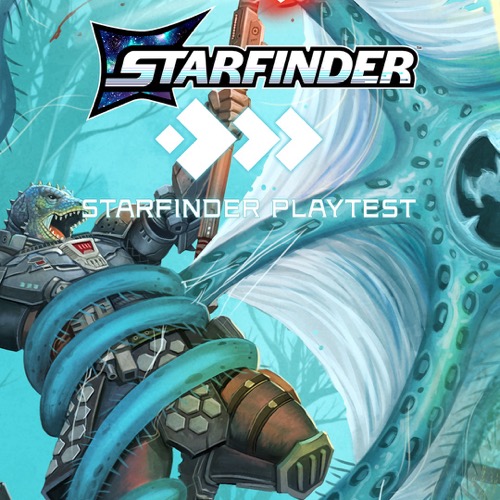Welcome to the fourth Starfinder Second Edition Field Test!
As the Starfinder team prepares for the launch of the Starfinder Second Edition Playtest later this summer, we’re releasing small snapshots of our work in progress. So far, we’ve previewed the soldier class, a couple of ancestries, and the mystic. Be sure to check out those Field Tests if you haven’t already! We appreciate all the discussion and hype around the Field Tests, which energizes and motivates our creative processes even more than coffee does (if you can believe it).
Speaking of motivation, Field Test #4 previews Starfinder’s “team player” and “party leader” class, the envoy! Inside, you’ll find our thoughts on the envoy’s role and capabilities, and an alpha version of the first 5 levels of the class, just like our earlier class previews. While you may have seen the envoy in action during the Starfinder team’s livestream playtest in October, or perhaps you were lucky enough to play a demo at a recent convention, this is your chance to see the actual draft of the class!Oh, and did I mention new art? I’m sure you’ve met our iconic envoy, Navasi!
So, what’s the envoy all about? They’re a Charisma-based class, and the Starfinder team generally thinks of envoys as “support” characters, though they’re quite likely to play a leadership role, whether as a mover and shaker in your campaign, as a “party leader” or “face” for the rest of the player characters, or all the above! For envoys in Second Edition, we’re trying a brand new mechanic in the form of “envoy directives.” These abilities—some of which you get automatically, and others which you can select as envoy feats—give some direction to the envoy’s allies and grant the envoy and their allies a small benefit for following through on the orders. Directives have a variety of uses, from singling out targets with “Get ‘Em!” to hustling the team into a better tactical position with “Get in There!” Envoys can also “lead by example,” following their own directive to grant everyone an additional bonus for the round. Combined with numerous other feats that grant envoys combat options (like doling out temporary Hit Points, buffs, and debuffs), the ability to wield awesome sci-fi weapons, and several unique reactions, envoys have a satisfying and flexible action economy. Every team will be happy to have an envoy along, and your ability to build an envoy character to fit a variety of party roles means your envoy will always have a team to call their own!
Envoys must be ready for anything, from performing community service to battling whatever horrifying creatures Thurston decides to throw at the rest of the team during internal playtests! So far, we think envoys are a blast to play. They almost always have time to get into a good position on the battlefield while consistently dishing out damage, granting benefits to their allies, and tackling unexpected situations with their variety of skills and adaptive skill feats. Sometimes a single turn for an envoy has a major impact on a fight, such as by repositioning the entire team after a nasty ambush. We’d love your feedback on how envoys play at your table, especially in different team compositions—or with multiple envoys in the same party!
So, what’re you waiting for? Get in there and read that field test! Finally, if you’re hoping to catch more snippets of the playtest, stay tuned for announcements about future playtest livestreams. We’ve still got more to show you between now and the playtest release at GenCon!
— The Starfinder Team
-Thurston Hillman, Managing Creative Director (Starfinder)
-Jenny Jarzabski, Senior Developer
-Dustin Knight, Developer
-Jessica Catalan, Starfinder Society Developer
-Mike Kimmel, Developer
Download The Fourth Starfinder Field Test Here!
Field Test #4: Team Up with an Envoy!
Wednesday, March 13, 2023








